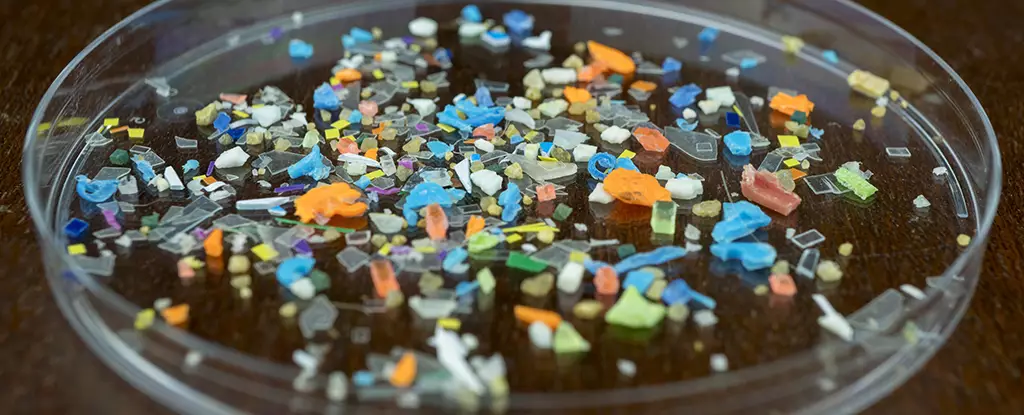Microplastics have infiltrated nearly every aspect of our environment, from the deepest ocean trenches to the air we breathe. Their pervasive presence, particularly in our food and water supply, raises alarm bells about long-term implications for human health. This concern was magnified by a recent study conducted by researchers at National Cheng Kung University in Taiwan, revealing that even the smallest microplastics—nanoplastics—can wreak havoc on gut health. But as we navigate these findings, it’s crucial to unpack the nature of these threats, as well as their implications for public health.
The Experimental Landscape: Mice as Guinea Pigs
The Taiwan-based researchers opted to feed mice polystyrene nanoplastics, which are merely 100 nanometers in size—infinitesimally smaller than a human hair. This experiment lasted for an extended period of 12 weeks, and meticulously documented how these minute plastic particles affected gut integrity. One might wonder, however, why mice were chosen as test subjects. While they are commonly utilized in scientific research, the physiological differences between rodents and humans must not be overlooked when interpreting the results.
The researchers found significant alterations in protein production, gene activity, and the overall microbial landscape of the mice’s intestines. Alarmingly, two proteins that serve to protect gut integrity diminished, while harmful bacteria began to proliferate—raising the specter of inflammatory bowel disease and other gastrointestinal issues in affected individuals. What does this mean for humans, who might not directly experience these dramatic shifts?
The Microbial Imbalance: More Questions than Answers
The scientists observed that beneficial bacteria levels—specifically Lactobacillus—declined, whereas harmful strains like Ruminococcaceae surged. The inquiry doesn’t stop there; a peculiar strain called Lachnospiraceae was found to consume the nanoplastics themselves, altering how these bacteria interacted and communicated within the gut. This unique change resulted in the suppression of mucus production, a critical element in maintaining gut health and preventing toxic substances from penetrating intestinal barriers.
According to Wei-Hsuan Hsu, one of the microbiologists involved in the study, this research marks a significant breakthrough in understanding how plastic disrupts communication between gut microbes and intestinal cells. However, to translate these findings to human health, further investigation is essential. We need to understand whether the levels of microplastics we’re generally exposed to are comparable to those used in this study, where the dosage was far beyond what humans would normally ingest.
Whispers of Caution: Implications for Human Health
Interpreting scientific studies can prove complex, especially when it comes to understanding biomedical implications in humans versus test subjects. Although the impacts seen in mice might not directly correlate to human physiology, the study shines a bright light on the potential dangers lurking in our environment. The findings signal a need for ongoing research, particularly in enhancing detection methods for nanoplastics in real-world scenarios.
Immunologist Yueh-Hsia Luo has aptly noted the limitations in current nanoplastic detection technologies. With such challenges, determining the extent of human exposure remains ambiguous. If the research findings resonate with human biology, even at a fraction of the nanoplastic levels used in the study, the implications could be dire, opening pathways to a myriad of health issues, including metabolic disorders and immune deficiencies.
Call to Action: The Urgency for Comprehensive Research
As scientific understanding deepens, the urgency for further inquiry becomes ever more pressing. The study serves not only as a foundation in exploring the molecular mechanisms of plastic particles but also as a clarion call for heightened awareness about our daily interaction with microplastics. Society must rally for better monitoring, stringent regulations, and more advanced research initiatives to safeguard public health.
The findings present a battlefield where scientists, policymakers, and concerned citizens must collaborate. As microplastics saturate our ecosystems and daily lives, we owe it to ourselves and future generations to address this looming crisis proactively. If we disregard the ramifications of our plastic consumption, we face the stark possibility of impairing not just our gut health but our overall well-being.

